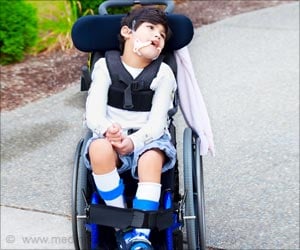As a disadvantaged person do you find dressing a challenge? Then adaptive clothing provides helpful features for disabled people to dress with dignity and comfort.
- Disabled people who account for 15% of the world's population, are excluded while designing a dress
- To curate their needs, clothing should have “adaptive” features in place of traditional ones
- Such innovative clothing will not only profit companies but also benefits society as a whole
Factsheet on Persons with Disabilities
Go to source).
Despite the fact they comprise the largest market segment, people with disabilities are largely not considered in contemporary fashion design. Their representation in the fashion industry has been practically non-existent until now.
Being aware of this drawback, fashion brands have started to provide on-trend clothing with new styles, combining fashion and technology for people with a variety of disabilities.
Read More..
How does Fashion Affects Individuals with Special Needs?
People with autism, Down’s syndrome, cerebral palsy, stroke, and other neurodivergent conditions have a tough time dressing. Those who wear diapers find it difficult to fit into traditional form-fitting garments, and many people with special needs being more sensitive to the fabric they wear can make typical styles extremely uncomfortable and distressing.If the dress they wear is not stylish enough or does not camouflage the disability, then people would not wear them. This highlights that persons with disabilities have feelings and expectations regarding aesthetics, modesty, and the social importance of appearance and identity (2✔ ✔Trusted Source
Refashioning Adaptive Clothing for Persons Living with Hemiparesis
Go to source).
Rather than forcing them to tolerate products that do not meet their needs, designers should consider the diversity of the world’s population and expand their mindset when it comes to the type of clothes they create.
Five Different Ways Fashion is Approaching Adaptive Clothing
To make dressing easier, adaptive clothing adopted innovative features in place of traditional buttons and snaps. This opens the door for greater inclusivity that bridges the gap between accommodation and universal acceptance. The wide range of innovations includes the following: (3✔ ✔Trusted SourceSimplified Dressing for Empowered Living
Go to source,4✔ ✔Trusted Source
What is adaptive clothing and how can it make life easier for people with a disability?
Go to source)
- Using magnets to connect the ends of the zip, makes clothing easier to do up one-handed. These enable individuals who can’t use buttons to better dress themselves.
- Specially designed pants and blouses to provide comfort in a seated position in a wheelchair.
- Shirts that allow for easy access to medical devices such as ports.
- Tagless clothing is tolerable for those who are allergic to tactile sensation
- Compression clothing for people with hypermobile joints or swelling (edema)
- Special clothing for prostheses use has reinforced areas, the extra room around the joint, and zipper access to the prosthesis
- Easy touch closures on shoes
- Open-back blouses.
Looking Ahead in Adaptive Clothing
Adaptive clothing helps caregivers assist their loved ones with special needs, easily. The sensory-friendly clothing and adaptive clothes reduce the risk of injuries for caregivers, healthcare workers, and people with disabilities getting dressed.Everyone deserves the chance to express themselves through their clothing choices and feel confident about their appearance irrespective of their limitations or special needs.
Comfort is always something that has been regarded in the fashion world, but with the rise of adaptive clothing, it will begin to take on a new leash.
As more fashion brands become aware of the need to serve the disabled population, a new era of style is starting to emerge, which reflects the progressive nature of modern society.
References:
- Factsheet on Persons with Disabilities - (https://www.un.org/development/desa/disabilities/resources/factsheet-on-persons-with-disabilities.html)
- Refashioning Adaptive Clothing for Persons Living with Hemiparesis - (https://www.researchgate.net/publication/344011418_Refashioning_Adaptive_Clothing_for_Persons_Living_with_Hemiparesis)
- Simplified Dressing for Empowered Living - (https://www.silverts.com/)
- What is adaptive clothing and how can it make life easier for people with a disability? - (https://theconversation.com/what-is-adaptive-clothing-and-how-can-it-make-life-easier-for-people-with-a-disability-171496)
Source-Medindia










